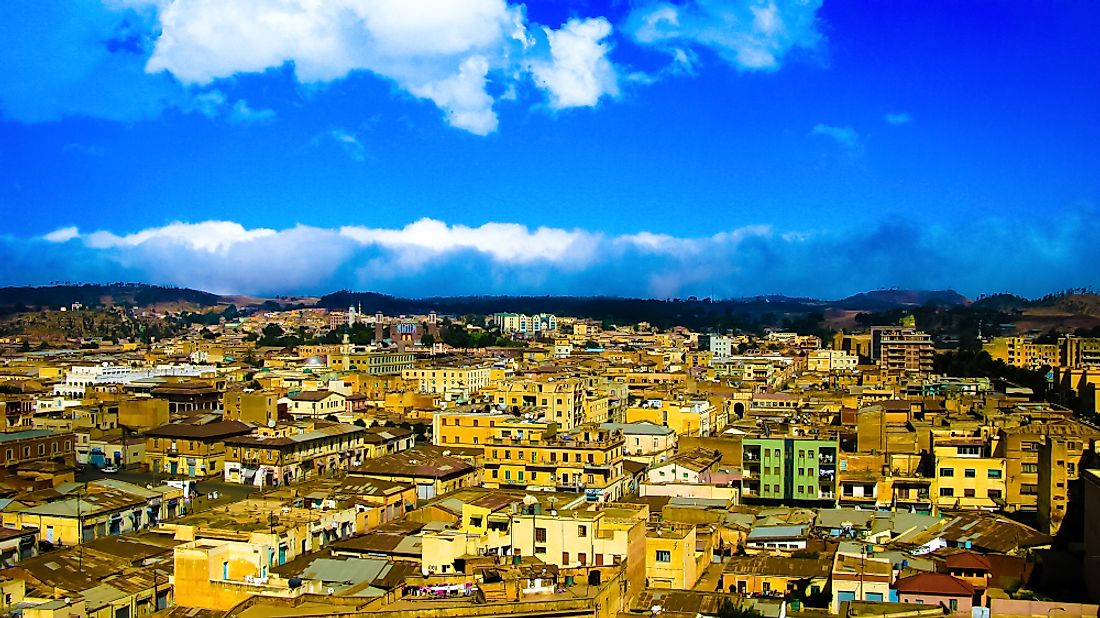What Is the Capital of Eritrea?

Asmara serves as the capital of Eritrea in the eastern region of the African continent. The town is also the largest in the country with a population of more than 800,000.
History
According to the traditional history of Eritrean Tigrinya, four clans originally inhabited the Asmara area. These four clans lived in the four towns around the Asmara area. The clans from the present day Tigray area in Ethiopia often attacked the four towns. The women from all the clans concluded that for them to conquer their enemy, the four clans should unite. All men from the four clans yielded for the same and came up with the name Árbate Asmera’. The name, in Tigrinya language, meant that the women from the four clans made them unite. Arbate was then removed after some time and Asmara used as the name of the city meaning ‘they made them unite.’
The Asmara grew faster when the Italians came to the city in 1889. The reason behind the rapid growth was the industrial investment in the town. Italian Eritrean Governor made Asmara the capital city due to its proximity to the Red Sea Port. The larger percentage of the inhabitants of the city by 1939 was Italians with a population of 53,000 out of 98,000.
Geography
The city occupies the escarpment at the northern corner of the Eritrea highlands bordering the Great Rift Valley in Ethiopia. The town has an altitude of about 2,300 meters. Asmara lies on the rocky plateau highland separating the coastal plains in the eastern part of the lowlands in the western region of the Eritrean Highlands.
Climate
The climate of Asmara ranges from the arid to semi-arid with mild winters and warm summers. The average precipitation received is 500 millimeters per year with most of the rains occurring in July and August. December to February is very dry. During the prolonged droughts, average monthly temperatures are about 29.5 degrees Celsius.
Economy
Most of the business headquarters are in the city of Asmara. The factories in the city primarily manufacture and process agricultural products. Some of the industries are textile and clothes manufacturing industries and, meat, beer and soft drinks processing industries. The primary source of income in the city is revenues from trading activities.
Religion
The city composed of both Christians and Muslims. Some of the landmarks, which are the worship places in the city, are the Kidane Mehret Cathedral for the Catholics and Al Khulafa Al Rashiundin Mosque building for the Muslims. The majority of the believers are the Christians of the Orthodox in Asmara city.
Governance
The Asmara has 13 administrative areas called districts. Since the head of state and government is the President of Eritrea, Asmara is the headquarter of government offices.
Buildings In The City
Some of the structures in the city are very old. These buildings took the style of Art Deco, for instance, the Art Deco Impero. Other buildings take the Italian-style among other modern styles.











